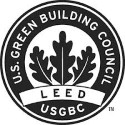Case #1
Main Problem
Low temperature difference across chilled water systems, high energy consumption in the central chilled water plant, old gas engine-driven chillers piped in series configuration.
Description
The approximately 40-story building had a perimeter induction air system with intermediate heat exchangers on several floors. The heat exchangers were served by the central chilled water plant and had three-way modulating valves to control the secondary leaving water temperature. To learn the real cooling load profile on the building, we took several steps:
- installed the front end of a building automation system
- installed high accuraccy temperature sensors and flow meter in the chilled water supply and returns
- wrote equations to calculate the tonnage on the building
- performed load calculations to include "load diversity"
By logging tonnage, supply and return chilled water temperature, and chilled water flow rate over an extended period of time, we were able to correctly redesign the central chilled water plant. IES founder Steve Griffin's experience engineering for a large manufacturer gave him particular insight into the part load characteristics and selection of centrifugal chillers.
Key aspects of the redesign resulted in an estimated energy savings of about $50,000 per year:
- pre-piping of the chiller plant
- changing the valves on the intermediate heat exchangers
- the installation of a new 1000-ton high efficiency chiller
- changing to variable-flow systems to eliminate a 100 HP pump
The variable pumping system and high efficiency chiller solved the low temperature difference of the chilled water system and substantially reduced the operating cost of the plant. As part of the design and installation, the control system was extended to critical portions of the system so that after installation, the system could be monitored, trended, and optimized.
The commissioning and optimization part of the project was crucial. Although the empirical data was gathered up front, it was important to optimize the central plant after the installation process. The commissioning process not only helped in monitoring and controlling all the design parameters but also addressed operational events after installation.









